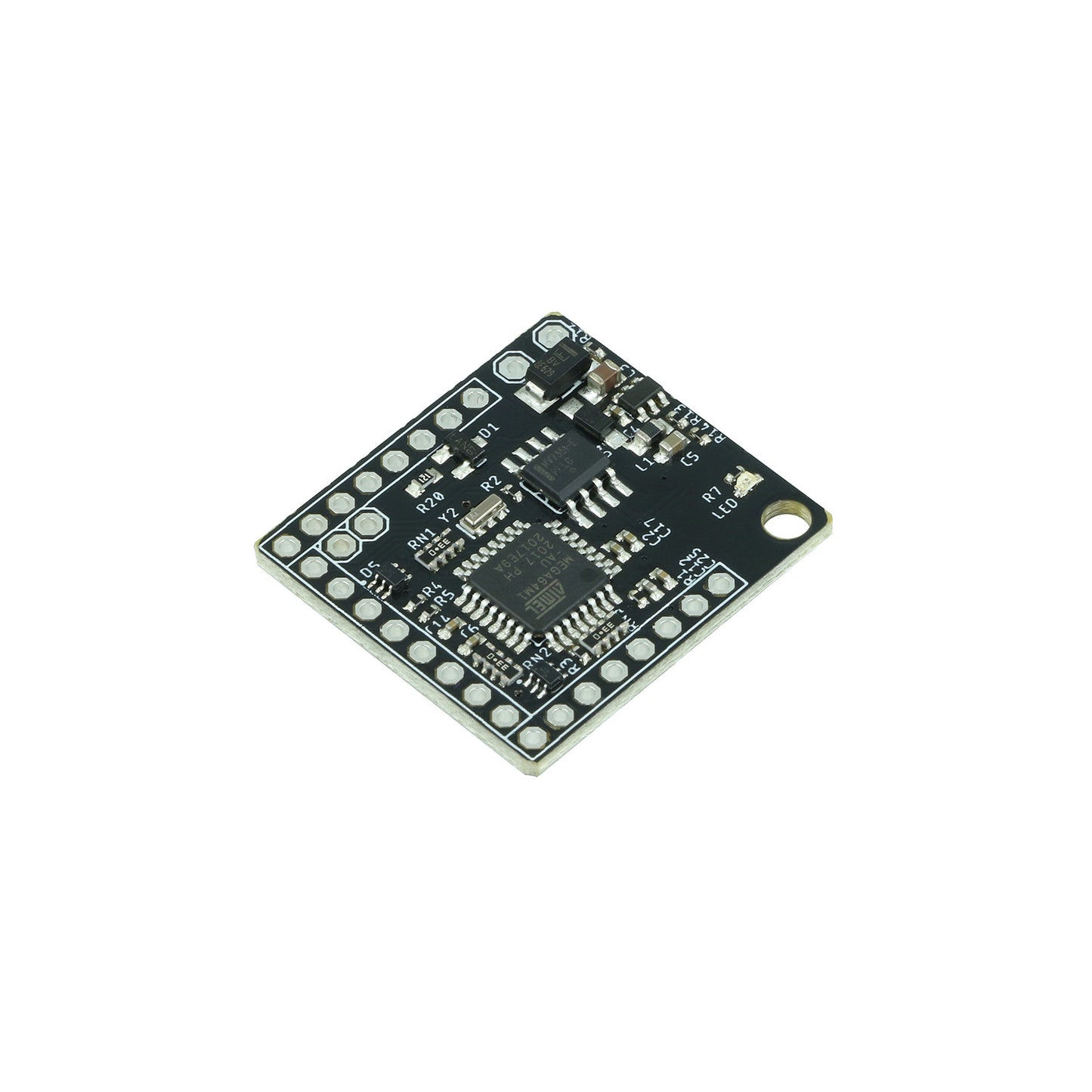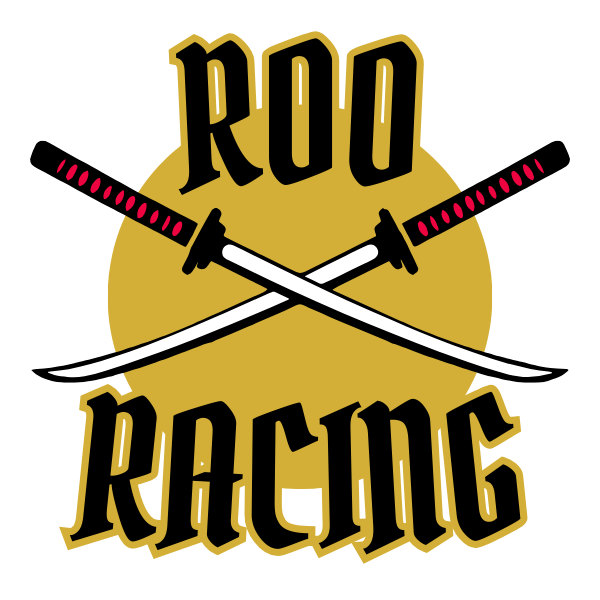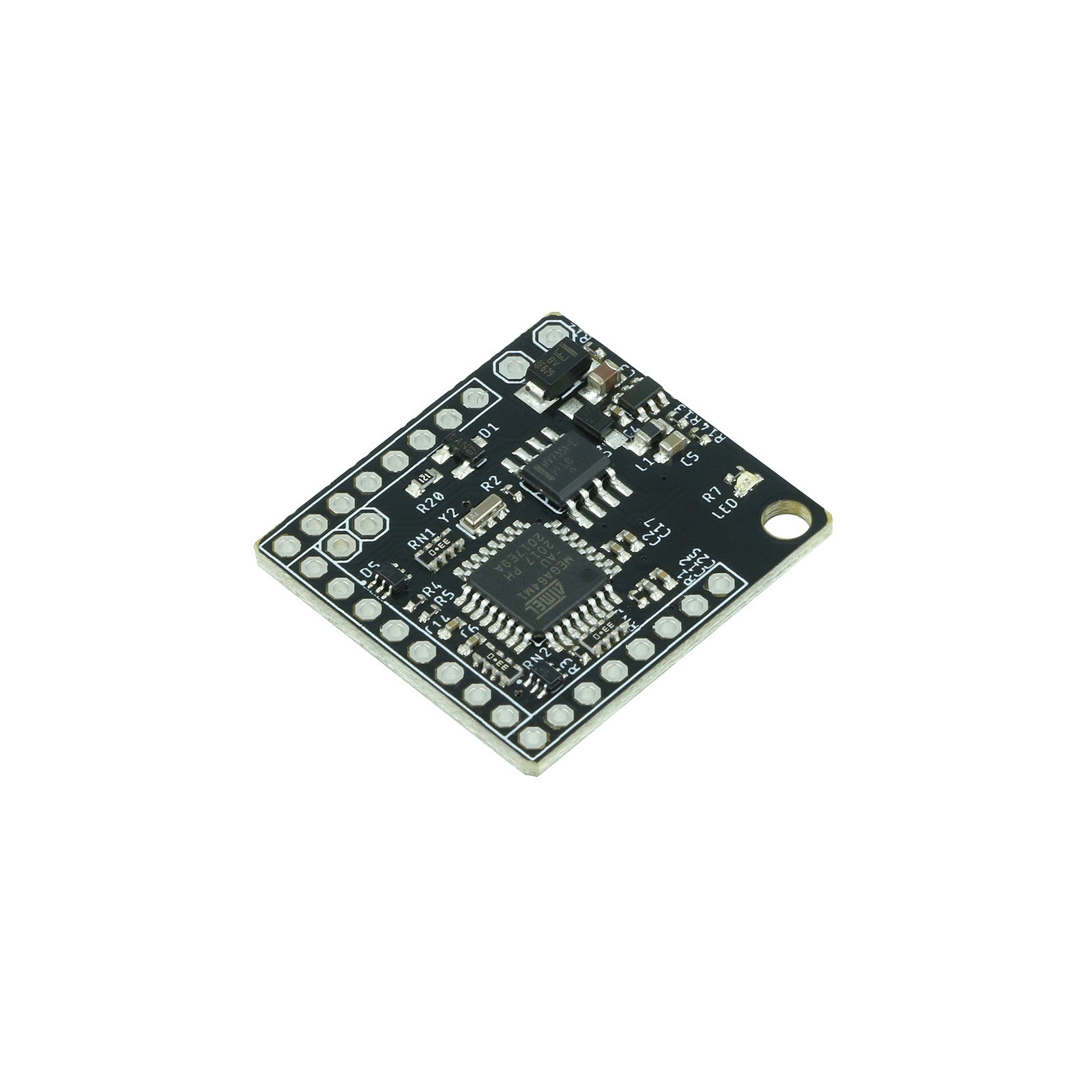1
/
of
1
PT Motorsports
CAN Checked - CFE18 - CANbus Function Extender
CAN Checked - CFE18 - CANbus Function Extender
Regular price
$193.00 AUD
Regular price
Sale price
$193.00 AUD
Unit price
/
per
Tax included.
Shipping calculated at checkout.
Add to backorder 4 weeks
Couldn't load pickup availability
\n
\n
\n
\n
\n
\n
\n
\n
\n
\nCFE18 stands for "Can Bus Function Extension" or colloquially also "Can Switch Board" - why is this module needed?
\n
\nCan bus connections in vehicles sometimes pose major challenges for our customers. This is particularly true for motorsport applications, when electronics have to be housed in the steering wheel and then information from adjustment knobs (trimpots) or push buttons has to be transmitted via Can bus.
\n
\nCANchecked now offers a small additional module that has 17 inputs: 8 for switches (low side) and 9 for analog inputs (0-5V signal). A voltage converter to ensure connection to a 12V vehicle electrical system is also already integrated.
\n
\nIn the v2 (board v0.8) 3 switching outputs have also been added (low side max 0.5A)
\n
\nTested with:
\n- MaxxECU
\n- Ecumaster (EMUB and PMU)
\n- LinkECU
\n- Haltech (emulates an IO Expander A + B or just B)
\n- Emtron
\n
\nThis device is also available with a housing: CFE18 - can switch board
\n
\n
\n
\n
\n
\n
\n
\n
\n
\n \n
\n
\n
\n
\n
\n
\n
\n
\n
\n
\n
\n
\n
\n \n
\n \nWith only 29x27mm, the board is kept very compact and can be placed anywhere. The pin spacing is 2.54mm - for the power supply, for safety reasons, 3.81mm. \n \nWe have made a hole for fastening, which can be used as a screw connection. \n \n
\n\n \n
- The CFE18 hardware -
\n \n\n \nWith only 29x27mm, the board is kept very compact and can be placed anywhere. The pin spacing is 2.54mm - for the power supply, for safety reasons, 3.81mm. \n \nWe have made a hole for fastening, which can be used as a screw connection. \n \n
\n
\n
\n
\n
\n
\n
\n \n
\n
\n
\n
\n
\n
\n
\n
\nCFE18 - Can Bus Termination
\n
\n
\nA solder jumper is attached to the circuit board.
\n
\nIf you close this, the Can Bus termination with 120 Ohm is active. The solder jumper is OPEN by default .
\n
\n
\n
\n
\n
\n
\n
\n
\n
\n
\n
\n
\n
\n \n
\n \n
\n\n \n
- Connections -
\n \n\n \n
\n
\n
\n
\n
\n
\n
\n
\n
\n
\n
\n
\n
\n
\n| 12V / GND (top) | \nPower supply 6-22V (reverse polarity protected) | \n
| AIN0-AIN8 | \n9 analog inputs (0-5V) | \n
| DIN0-DIN8* | \n9 digital inputs (maximum 5V) (internal pullup 20-50K) \n*DIN8 is omitted in v0.8 | \n
| 5V/SGND | \nPower supply analog sensors or sensor ground | \n
| CANL/CANH | \nCan Bus connection (Can Low, Can High) \nCAN 2.0 A/B – 125, 250, 500, 1000 kbps | \n
| AUX1-3* | \nLow side outputs 0.5A maximum - *from board v0.8 | \n
| RX/TX/DTR/GND | \noptional: for possible updates \n(additional hardware required) | \n
| AIN1, AIN2, AIN6, DIN6 | \noptional: four frequency inputs 0-60000Hz | \n
\n
\n
\n
\n
\n
\n
\n
\n
\n
\n
\n \n
\n \n
\n\n \n
- Motorsport steering wheel -
\n \n\n \n
\n
\n
\n
\n
\n
\n
\n
\n
\nOne application would be a motorsport steering wheel. With just 4 connections via a curly cord (12v, Ground, CANH and CANL) a wide variety of inputs can be transmitted via Can Bus.
\nTrim pots, momentary buttons and latching buttons.
\n
\n
\n
\n
\n
\n
\n
\n
\n
\n
\n
\n \n
\n \n
\n\n \n
- Connection options -
\n \n\n \n
\n
\n
\n
\n
\n
\n
\n \n
\n
\n
\n
\n
\n
\n
\n
\n
\n
\nSwitches and trimpots (adjustment buttons) can be connected to the CFE18.
\n
\nBut sensors such as oil pressure, fuel pressure, boost pressure, exhaust back pressure and integration in a separate housing would also be possible.
\n
\n
\n
\n
\n
\n
\n
\n
\n
\n
\n
\n
\n
\n \n
\n \n
\n\n \n
- CFE18 connection / Default Can Bus Stream -
\n \n\n \n
\n
\n
\n
\n
\n
\n
\n
\n
\n
\n**Specify your ECU at checkout and we'll configure your device before shipping**
\n
\nThe data of the inputs are queried and transmitted every 50ms (100Hz - changeable from 1Hz to approx. 300Hz - depending on the smoothing ). The data is transmitted as "unsigned big endian".
\n
\nAs soon as 12V and ground are connected, the green status LED on the front lights up and the Can Bus data is transmitted.
\n
\n
\n
\n
\n
\n
\n
\n
\nCan Bus ID: 0x700 ( Base Data CAN ID - changeable)
\n
\n
\n
\n* from software version 3
\n
\n| byte | \n0 | \n1 | \n2 | \n3 | \n4 | \n5 | \n6 | \n7 | \n
| Base ID | \nAIN0 0-1023 | \nAIN1 0-1023 | \nAIN2 0-1023 | \nAIN3 0-1023 | \n||||
| Base ID +1 | \nAIN4 0-1023 | \nAIN5 0-1023 | \nAIN6 0-1023 | \nAIN7 0-1023 | \n||||
| Base ID +2 | \nAIN8 0-1023 | \nbit masked DIN0-7 | \nbit masked DOUT1-3 | \n\n | \n | internalTemp | \nversion | \n|
| Base ID +3 | \nFreqIn1 0-60000 | \nFreqIn2 0-60000 | \nFreqIn3 0-60000 | \nFreqIn4 0-60000 | \n||||
\n
\n
\n
\n
\n
\n
\n
\n
\n
\n \n
\n
\n
\n
\n
\n
\n
\n
\n
\n
\n
\n
\n
\n
\n
\n
\n
\n
\n
\n
\n
\n
\n
\n
\n
\n
\n
\n
\n
\n
\n
\n
\n
\n
\n
\n
\n
\n
\n
\n
\n
\n
\n
\n
\n
\n
\n
\n
\n
\n
\n
\n
\n
\n
\n
\n
\n
\n
\n
\n
\n
\n
\n
\n
\n
\n
\n
\n
\n
\n \n
\n\n \n
- Digital outputs -
\n\n \n
\n
\n
\n
\n
\n
\n
\n
\n
\n
\n*From hardware v0.8
\n
\nThe CFE18 has three digital outputs starting with hardware version 0.8. These can handle a maximum load of 500mA and switch to ground (LOW SIDE).
\n
\nTo do this, send a CAN bus frame every 100ms (CAN ID is configurable here - if there is a pause of 500ms between frames, the timeout is activated and the outputs are deactivated):
\n(0=inactive, 1=active)
\n
\n
\n
\nThe setting is done via Can Bus - see configuration options
\n
\n
\n| byte | \n0 | \n1 | \n2 | \n3 | \n4 | \n5 | \n6 | \n7 | \n
| CAN RX ID (default: 0x640) | \nAUX1 \n0/1 | \nAUX2 \n0/1 | \nAUX3 \n0/1 | \nunused | \n||||
\n
\n
\n
\n
\n
\n
\n
\n
\n
\n
\n \n
\n \n
\n\n \n
- AIN smoothing -
\n \n\n \n
\n
\n
\n
\n
\n
\n
\n
\n
\n
\n* From software version 3
\n
\nIf the analog inputs fluctuate too much, they can be smoothed using software. This can be configured separately for each analog input.
\n
\nThe analog inputs are evaluated with each transmission (default: 20Hz).
\n
\n
\n
\n
\n
\n
\nIf, for example, a smoothing factor of 4 is set, the average of the last 16 measurements is taken. This makes the value quieter (smoother), but also reacts more slowly to fluctuations. Here you have to find a healthy middle ground to suit your sensors and application.
\n
\nThe setting is made via Can Bus - see " Configuration options "
\n
\n| setting | \nsmoothing | \n
| 0 | \nno smoothing | \n
| 1 | \n2 | \n
| 2 | \n4 | \n
| 3 | \n8 | \n
| 4 | \n16 | \n
| 5 | \n32 | \n
| 6 | \n64 | \n
\n
\n
\n
\n
\n
\n
\n
\n
\n
\n
\n \n
\n \n
\n\n \n
- Configuration options -
\n \n\n \n
\n
\n
\n
\n
\n
\n
\n
\n
\n
\n**Specify your ECU at checkout and we'll configure your device before shipping**
\n
\nThe following values can be adjusted via Can Bus:
\n
\n
\n
\n* from software version 3
\n**from software 0.8a
\n
\n
\nByte 0 + 1 are always 0x0C and 0x0A
\nByte 2 Feature beginning with 0x0A
\n
\nFeatures:
\ncan id: 0x0A (high byte) + 0x0B (low byte)
\nconfig can id: 0x0C (high byte) + 0x0D (low byte)
\nfrequency: 0x0E
\ncan bus speed: 0x0F
\nmode: 0x10
\n
\nExample 1: change data can id to 0x600
\n
\n| Data CAN ID: | \nwith which Can ID the data is sent | \ndefault: 0x700 | \n
| Config CAN ID: | \nwith which CAN ID the board can be configured - RESTART required | \ndefault: 0x70A | \n
| Frequency: | \nwith which the data is sent via the Can Bus in milliseconds | \nDefault: 10ms = 100Hz | \n
| Can Bus Speed: | \n1=125kbps, 2=250kbps,3=500kbps,4=1Mbit - RESTART required | \nDefault: 3 = 500kbps | \n
| Fashion: | \n0=default, 1=EMUv3, 2=Haltech IO12B, 3=Haltech IO12A+B, 6=Motec E888 | \nDefault: 0 | \n
| *Smoothing: | \nsmoothing of the analog inputs, configurable for each input (0-249) | \nDefault: 160 \n249 = maximum smoothing | \n
| **Frequency input: | \nsmoothing and activation of the frequency input | \nDefault: 0 = OFF (no frequency input) \n249 = maximum smoothing | \n
| **Pullup: | \nActivating an internal pull-up resistor (20K-50K) on analog and digital inputs | \nDefault: 1 = resistance active \n(0 = resistance off) | \n
\n
\n
\n
\n
\nExample 2: change frequency to 50Hz (20ms = 0x14 in hex)
\n| can id | \nbyte 0 | \nbyte 1 | \nbyte 2 | \nbyte 3 | \nbyte 4 | \nbyte 5 | \nbyte 6 | \nbyte 7 | \n
| 0x70A | \n0x0C | \n0x0A | \n0x0A | \n0x06 | \nunused | \n|||
| 0x70A | \n0x0C | \n0x0A | \n0x0B | \n0x00 | \nunused | \n|||
\n
\n
\n
\n
\nExample 3: change can bus speed to 1Mbit
\n| can id | \nbyte 0 | \nbyte 1 | \nbyte 2 | \nbyte 3 | \nbyte 4 | \nbyte 5 | \nbyte 6 | \nbyte 7 | \n
| 0x70A | \n0x0C | \n0x0A | \n0x0E | \n0x14 | \nunused | \n|||
\n
\n
\n
\n
\nExample 4: change mode to EMUv3
\n| can id | \nbyte 0 | \nbyte 1 | \nbyte 2 | \nbyte 3 | \nbyte 4 | \nbyte 5 | \nbyte 6 | \nbyte 7 | \n
| 0x70A | \n0x0C | \n0x0A | \n0x0F | \n0x04 | \nunused | \n|||
\n
\n
\n
\n
\nExample 5: change smooting on AIN1 to 4 (= 16)
\n| can id | \nbyte 0 | \nbyte 1 | \nbyte 2 | \nbyte 3 | \nbyte 4 | \nbyte 5 | \nbyte 6 | \nbyte 7 | \n
| 0x70A | \n0x0C | \n0x0A | \n0x10 | \n0x01 | \nunused | \n|||
\n
\n
\n
\n
\n(0x20 = AIN1, 0x21 = AIN2, 0x22 = AIN3 ..., 0x28 = AIN8)
\n
\n| can id | \nbyte 0 | \nbyte 1 | \nbyte 2 | \nbyte 3 | \nbyte 4 | \nbyte 5 | \nbyte 6 | \nbyte 7 | \n
| 0x70A | \n0x0C | \n0x0A | \n0x20 | \n0x04 | \nunused | \n|||
\n
\n
\n
\n
\n
\n
\n
\n
\n
\n
\n \n
\n \n
\n\n \n
- Control unit / ECU configuration -
\n \n\n \n
\n
\n
\n
\n
\n
\n
\n
\n
\n
\n
\n**Specify your ECU at checkout and we'll configure your device before shipping**
\n
\nThe analog inputs provide 10-bit resolution and thus values from 0 to 1023. The value must be converted in the control unit. All values are "unsigned big endian"
\n
\nExamples:
\n5V voltage AIN0
\n0x700 Byte0 + 1
\nmultiplier: 5; Divisor: 1023; Offset: 0
\n
\nor multiplier: 0.004887585533
\n
\nExhaust gas temperature (type k) AIN7:
\n0x702 Byte6 + 7
\nmultiplier: 1250; Divisor: 1023; Offset: 0
\n
\nor multiplier: 1.2218963832
\n
\n
\n \nEither the individual bytes are used for the digital inputs. Eg DIN6: 0x702 byte 6 or the bit mask at 0x702 byte2 \n \neg DIN6: 0x702 Byte2 Mask: 0x40 \n \n
\n\n \nEither the individual bytes are used for the digital inputs. Eg DIN6: 0x702 byte 6 or the bit mask at 0x702 byte2 \n \neg DIN6: 0x702 Byte2 Mask: 0x40 \n \n
\n
\n
\n
\n
\n
\n
\n
\n
\n
\n \n
\n \nYou can also download this page as a PDF here: \n \n
\n\n \n
- Documentation / download -
\n \n\n \nYou can also download this page as a PDF here: \n \n





